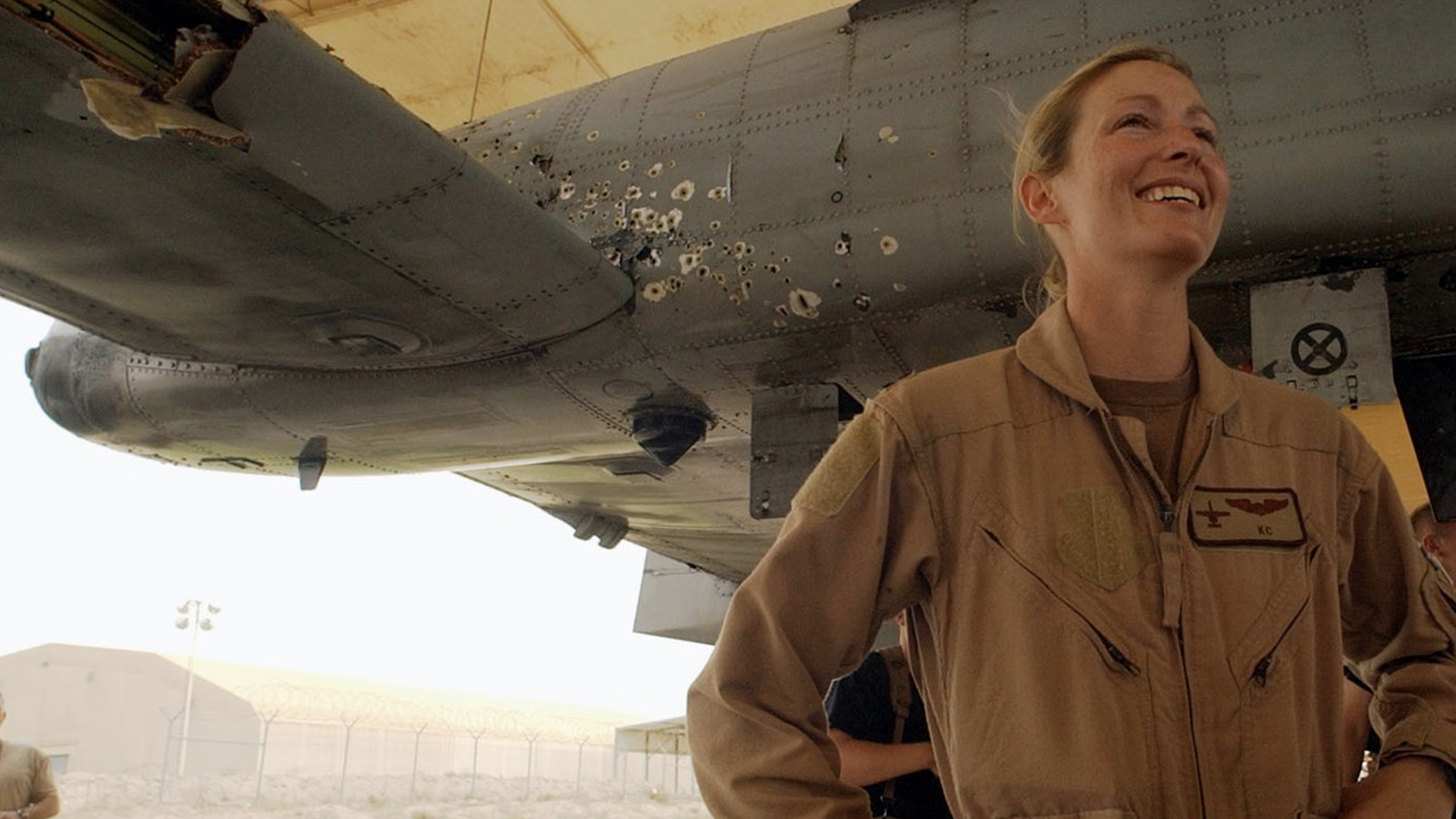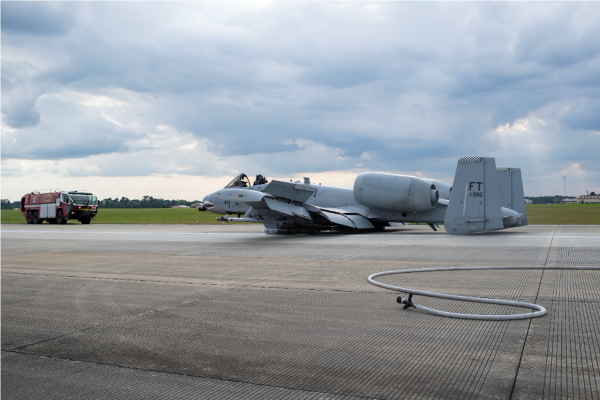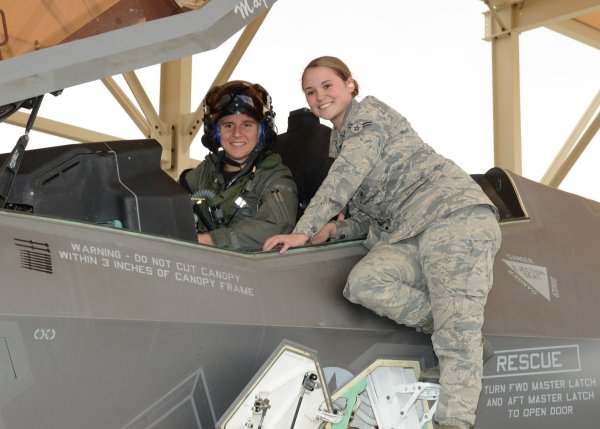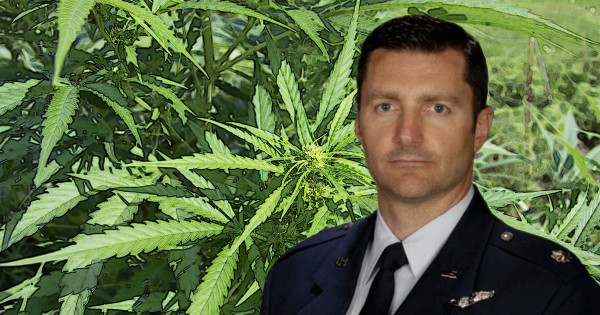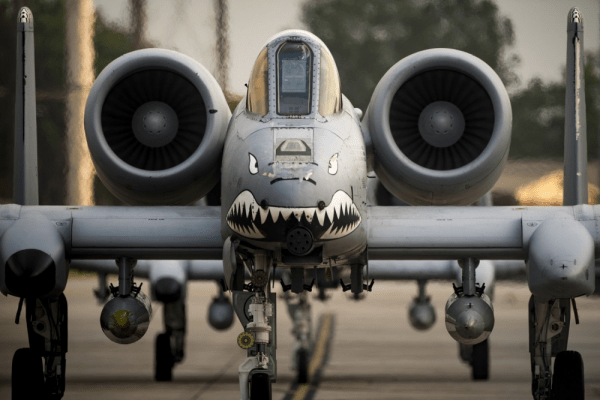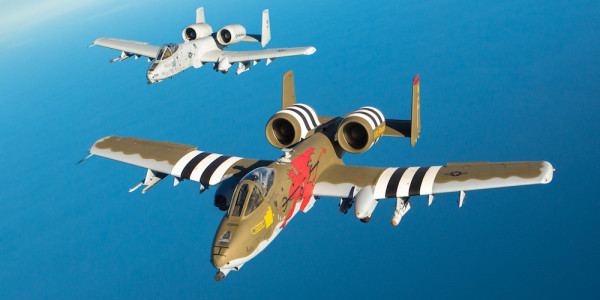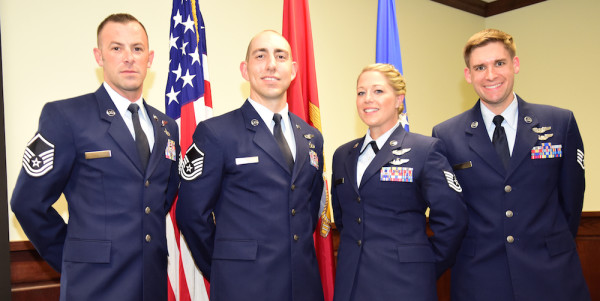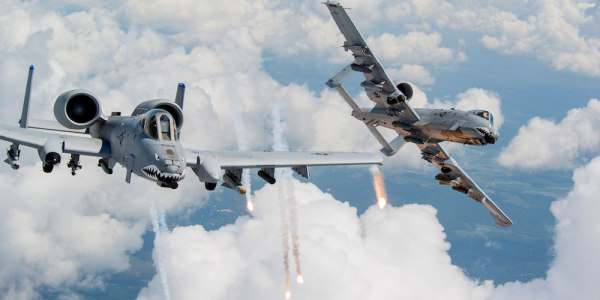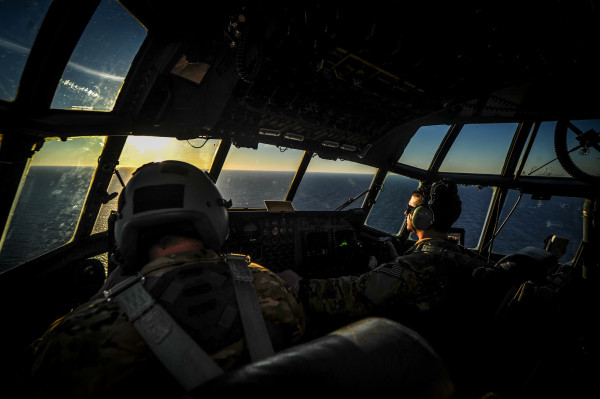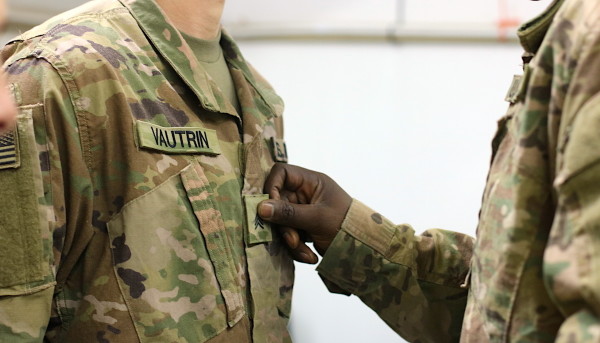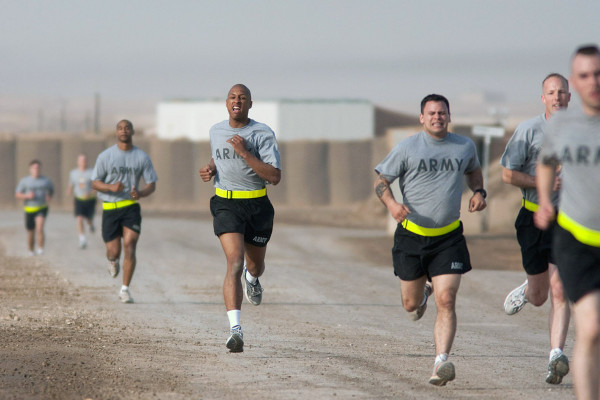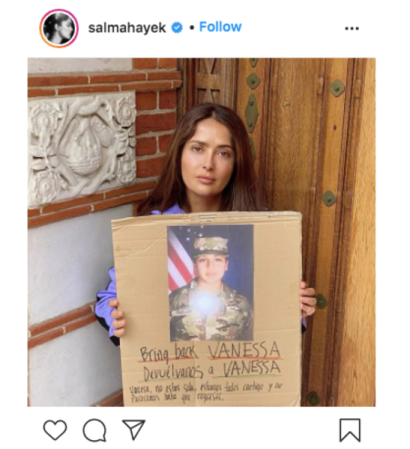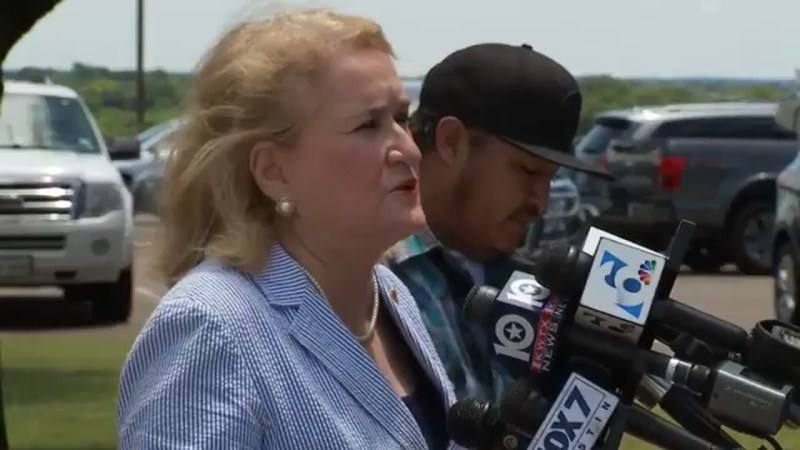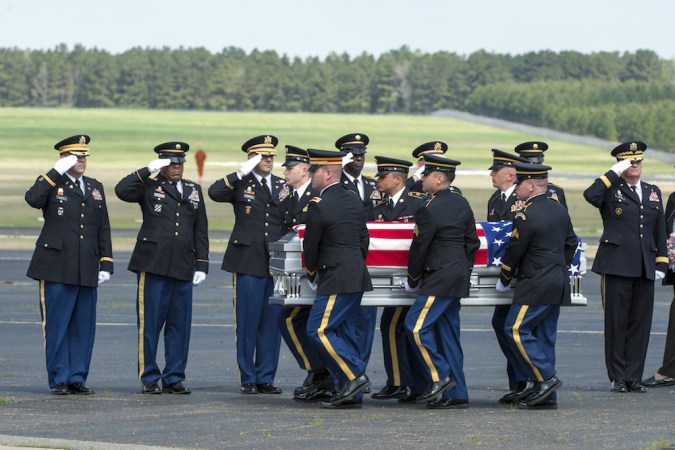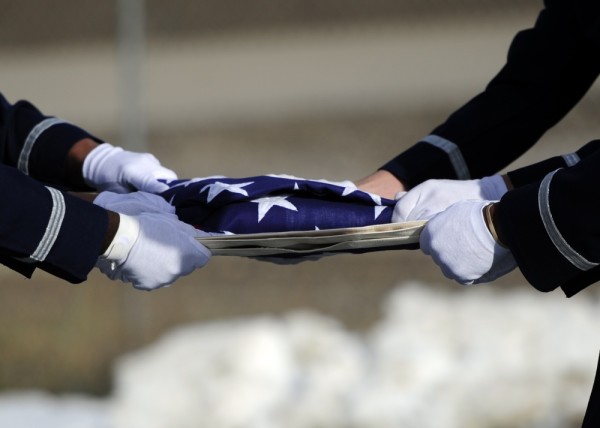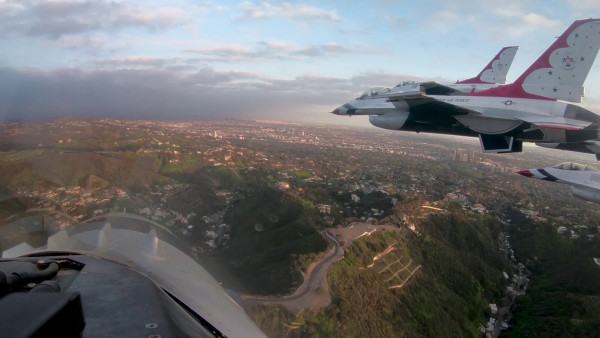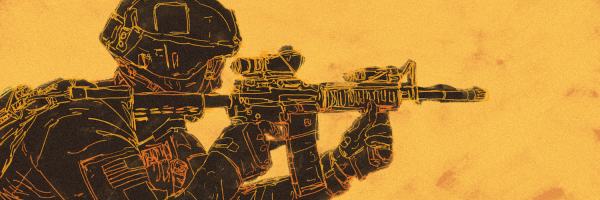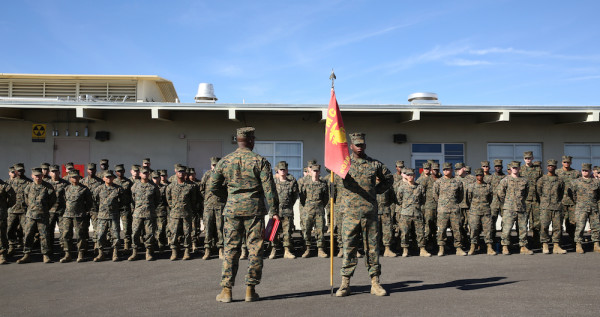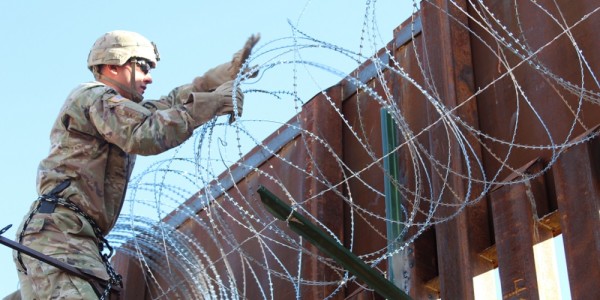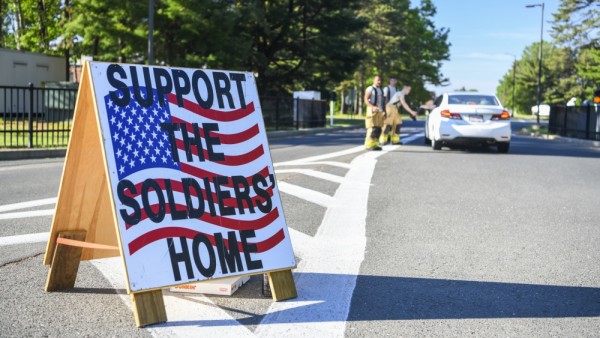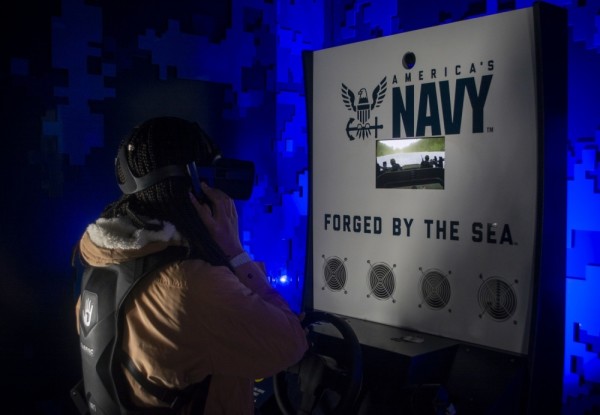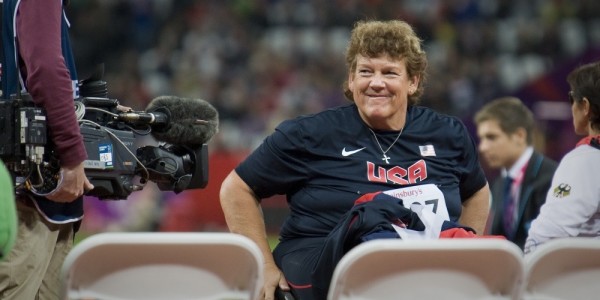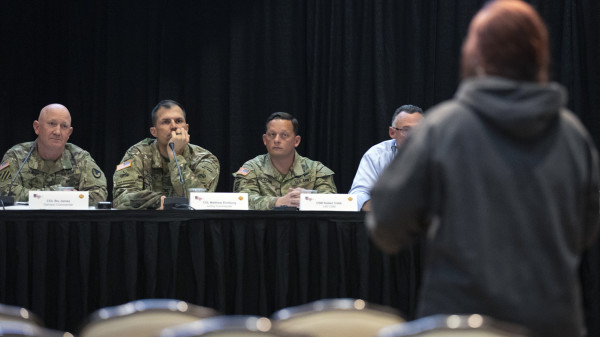One of the late legendary Air Force pilot Chuck Yeager’s most famous quotes is “If you can walk away from a landing, it’s a good landing. If you can use the airplane the next day, it’s an outstanding landing.” Retired Air Force Col. Kim “Killer Chick” Campbell seemed to find new meaning to the phrase on April 7, 2003, when she touched down at Ahmad Al-Jaber Air Base, Kuwait roughly an hour after much of the tail of her A-10 Warthog attack plane was shredded by a surface-to-air missile that hit while she and her flight lead, Lt. Col. Rick “Bino” Turner, were providing close air support for U.S. troops fighting in downtown Baghdad.
“It felt like the best landing I had ever done,” Campbell told Task & Purpose nearly 20 years later. “Any time you land and can walk away it’s good, but here the relief was … I can’t even describe to you what it was like being back on the ground.”
A captain at the time, Campbell had not expected to pull off such a dangerous landing when she took off earlier that day. Weeks into the U.S. invasion of Iraq, her mission was to attack an Iraqi command post in Baghdad, but on the way in, she and Turner got a call from 3rd Infantry Division soldiers under fire and in need of air support. Campbell had already flown nearly a dozen close air support missions since the war began on March 20, and several missions in Afghanistan in 2002. But the situation over Baghdad that day was one of the most intense she had seen yet.
The gunbattle below was being waged in the middle of a city, where she and Turner had to consider civilian casualties and damage to civilian infrastructure before making any gun runs, Campbell explained. There were also surface-to-air missiles in Baghdad that could knock either pilot out of the sky and make the situation even more dangerous. To top it all off, there were clouds over the city that day, so Campbell and Turner could not loiter at a higher, safer altitude to get a better picture of the fight below without losing sight of the city.
“The A-10 is actually fairly easy to fly,” Campbell said. “It’s all the tactics, techniques, and procedures you have to follow while flying that make things more difficult.”

In the end, the A-10 was built from the ground up to help grunts on the ground, so that’s exactly what Campbell and Turner did. They flew several passes firing rockets and 30mm bullets at Iraqi fighters who were launching rocket-propelled grenades at U.S. troops from under a bridge. Campbell was on her last pass before the two pilots were due to regroup and reevaluate the situation when she saw an orange fireball and felt the aircraft shake from an explosion at the back of her jet. Campbell knew immediately that she had been hit, and now she could see the city of Baghdad coming up quickly to meet her as the A-10 pitched earthwards.
“In an emergency situation like that, I felt like time slowed down,” the pilot recalled. “I knew I had to take quick action but I also had to figure out what was going on in my cockpit.”
Campbell’s training took over, and one of the first lessons pilots learn is to maintain control of the aircraft. But that’s tough to do when your entire instrument panel is lighting up with danger and your hydraulic gauge is at zero. Hydraulics in an airplane is like power steering in a car, as Campbell explained: it helps control the brakes, flaps, landing gear, and other equipment vital to operating the plane. When the hydraulics fail or get dumped out the back in an explosion, a pilot’s controls start to lock up and become harder to manipulate.
“Flying the A-10 without hydraulics is like trying to steer a car where the steering wheel moves a little bit left and right, but you have to fight a tremendous amount of resistance (old pre-power steering days) to get it to turn even a bit,” said retired Lt. Col. Gregg Montijo, a fellow A-10 pilot and a friend of Campbell’s. He also likened it to trying to push a revolving door with high resistance.
“It’s as if the stick is stuck in quick-setting cement,” Montijo said. “Very fatiguing over time.”

In fact, the A-10 is one of the few aircraft that can even fly without hydraulics. As a close air support platform, the Warthog is designed to take a beating, so it has a system of cranks, pulleys and cables called the manual reversion system which allows a pilot to fly the jet in an emergency. But it ain’t easy.
“Aircraft control in the manual flight mode is exceptionally demanding of piloting skills,” wrote the Air Force Human Resources Laboratory in a 1982 report on the manual reversion system. “In fact, as early as 1973, it was reported that there existed an ‘unacceptable pilot workload for the landing task in the manual reversion mode.’”
Keep in mind that Campbell had to also re-teach herself how to fly manual literally on the fly, and while being shot at by anti-aircraft fire. Though the pilot had done some manual reversion flying in training, it was a new experience relying solely on it to get out of a hairy situation. But at that moment, Campbell didn’t have much time to consider the risks.
“Once I flipped the switch to manual reversion, I don’t remember it being overly difficult,” she recalled. “I was just so relieved the airplane was finally climbing and responding.”
Subscribe to Task & Purpose Today. Get the latest in military news, entertainment and gear in your inbox daily.
Luckily, Campbell and Turner made it out of the combat zone, but now she had another decision to make: bail out or attempt to wrestle the Warthog the 300 miles back to Kuwait? Upon closer inspection, Turner reported that her A-10 had hundreds of small holes in it and a football-sized hole in the right horizontal stabilizer. Campbell had an hour to get used to flying the A-10 in manual on the way back to Al-Jaber, but landing the plane would be another order of risk. Landing a plane requires minute adjustments that are much more difficult to execute without hydraulics.
“We talk about flying in manual reversion, but we don’t actually train to land in manual reversion,” the pilot explained. “It’s dangerous, there is risk associated with it … the checklist for manual reversion is to ‘attempt only under ideal conditions,’” which did not describe Campbell’s circumstances at the time.
Campbell may have been in a tough spot, but she was not alone. Her flight lead, Lt. Col. Turner, was an old hand at flying Warhogs who helped Campbell get a better feel for manual flying. Together they weighed their options and discussed the risks, and in the end, Turner trusted his subordinate to make her own decision. She decided to go for it.
“His actions after I was hit were absolutely critical,” Campbell said. “I was so focused on flying the airplane, getting it under control, whereas he had more awareness of what was going on around me.”
If she was afraid, Campbell was too busy to dwell on it.
“When I go back and listen to the audio recording [of the flight], I can hear the fear, I just didn’t have time to think about it,” she recalled.

The crash recovery team was waiting at Al-Jaber when Campbell and Turner appeared, but Campbell put the plane down just fine, and she later received the Distinguished Flying Cross, one of the Air Force’s highest awards, for her flight that day.
“I was impressed,” said Lt. Col. Mike Millen, who was chief of safety for the 332nd Air Expeditionary Wing at the time, in a 2010 Air Force article. “Kim landed that jet with no hydraulics better than I land the A-10 every day with all systems operational.”
Landing without hydraulics is so tricky that even the chairman of the Joint Chiefs of Staff took notice. Campbell “is one of the few pilots who ever landed the A-10 in the manual mode,” said Air Force Gen. Richard Myers, who was chairman from 2001 to 2005.
“A lot of people think that it’s not even worth trying,” Myers said in a 2003 speech at the U.S. Air Force Academy. “It’s just a very difficult feat of airmanship, but she did it. That’s a credit to her skill, her training, her dedication, and leadership.”
Campbell herself would later attempt a manual landing a few times in simulators, “and they weren’t all successful,” she said.
Back at Al-Jaber, a crowd gathered to check out the partially-destroyed A-10 which had somehow survived the journey home. But that was far from the end of Campbell’s war. In fact, she was back in the cockpit of a different Warthog the next day supporting a search-and-rescue mission for an A-10 pilot who had been shot down and was later rescued by ground troops.
“The rescue pilots were there for me the day before,” Campbell said, so she would be there when they needed her.
“I didn’t have time to think about how I was going back to the place I was nearly shot down,” she said. “It was all about taking on that Sandy role,” Campbell added, referring to a term for A-10 pilots performing search and rescue missions.

April 7, 2003 was the last mission for Campbell’s A-10, aircraft number 81-987, which was too heavily damaged to fly again. It’s still a bit off the ground though: the aircraft is on display at Seymour Johnson Air Force Base, North Carolina, where it’s canted up as if just taking flight. Campbell meanwhile went on to fly more close air support missions in Iraq, amass 1,800 hours flying the Warthog, command an air expeditionary group, and mentor cadets at the Air Force Academy, where she emphasized the value of helping out your buddies.
“That’s one of the lessons I took out of it,” said Campbell, herself an academy grad, “the importance of being a good wingman. You need to be ready to respond if it happens to you, but you also need to be there to respond if it happens to your wingman.”
Campbell was not the only one to take a lesson away from her experience. One active-duty A-10 pilot said that “Kim’s flight is still told around the bar regularly.”
“New pilots see the pictures during B Course before they have even flown the [Warthog]” said the pilot, on the condition of anonymity because he was not cleared to speak with the press. “While it hasn’t changed tactics, it does give every [Warthog] driver confidence in the jet.”
There’s more to survivability than how visible your aircraft is on enemy radar, the pilot explained. Knowing that the A-10 can take a ton of punishment and still fly “is a huge confidence boost” when you see anti-aircraft fire shooting at you, he said.
“In all my time in combat I’ve never once worried that the [Warthog] would bring me home,” the pilot added.
It takes a strong aircraft to survive combat, but it also takes a strong, confident pilot. Studies have shown that that confidence is sometimes more difficult for female or nonwhite Air Force student pilots to cultivate in training, where there are fewer students and mentors who look like them. But that seems to be slowly changing. When Campbell was a captain, she was the only female pilot in her squadron. Last October, an all-female flight of eight A-10 pilots and two F-16 fighter pilots went up at Osan Air Base, South Korea, just because they could. If you want to do something like that, Campbell said, you can go after it, but you have to put in the work.
“I never wanted to be labeled as a female fighter pilot,” she explained. “I wanted to be the best pilot. So just work hard and be credible. Be good at what you do.”
What’s new on Task & Purpose
- What we know about the Russian general killed in Ukraine
- Where is the Russian air force? Experts break down why they might be hiding
- Meet Army Col. Daniel Blackman, the accidental face of romance scams around the world
- An urban warfare expert offers Ukrainians tips on battling Russians in close combat
- How the US can beat Russia in Ukraine without firing a shot
Want to write for Task & Purpose? Click here. Or check out the latest stories on our homepage.

